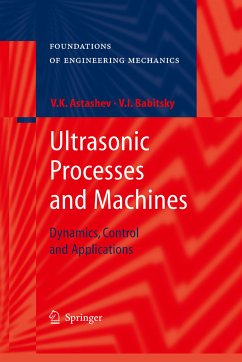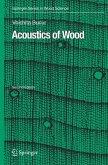This work presents the foundations of dynamics and control for ultrasonic processing systems. The intention is to bridge the gap between theory and the practical application of ultrasonic technology.
This book considers ultrasonic systems as special vibratory machines that function by exploiting nonlinear dynamic processes. Recommendations are given for designing and tuning ultrasonic machines.
The ultrasonic machines analysed are predominantly concerned with the processing of solids. Applications include: ultrasonic erosion, ultrasonic hardening, ultrasonic welding, ultrasonically assisted plastic deformation, ultrasonically assisted turning, and ultrasonically assisted drilling.
This book is intended for advanced students, engineers and researchers who are involved with the study, design and application of ultrasonic processing systems. Lecturers and students should also find useful examples of practical analysis and the application of nonlinear dynamical systems subjected to high frequency vibration.
This book considers ultrasonic systems as special vibratory machines that function by exploiting nonlinear dynamic processes. Recommendations are given for designing and tuning ultrasonic machines.
The ultrasonic machines analysed are predominantly concerned with the processing of solids. Applications include: ultrasonic erosion, ultrasonic hardening, ultrasonic welding, ultrasonically assisted plastic deformation, ultrasonically assisted turning, and ultrasonically assisted drilling.
This book is intended for advanced students, engineers and researchers who are involved with the study, design and application of ultrasonic processing systems. Lecturers and students should also find useful examples of practical analysis and the application of nonlinear dynamical systems subjected to high frequency vibration.
Dieser Download kann aus rechtlichen Gründen nur mit Rechnungsadresse in A, B, BG, CY, CZ, D, DK, EW, E, FIN, F, GR, HR, H, IRL, I, LT, L, LR, M, NL, PL, P, R, S, SLO, SK ausgeliefert werden.









